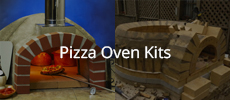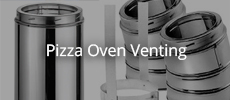I understand your questions but I'll not answer them. If you need to ask, you don't have the knowledge to deal with these type of chemical. I don't wish to be unpolite, I only care about your health. Manufacturing this is really nasty work, no matter what any you tuber say or show. Being outside with tail wind, mask, glasses and so on is not enough. I did my own but will never do it again. Buy a liter, it is more than enough and should cost less than $10. Store bought SS is in the 35-45 % solid range.
Announcement
Collapse
No announcement yet.
28" homebrew cast oven in walled enclosure Belgium
Collapse
X
-
Hi Petter, I’ll give it a try then if it can’t harm.
I want to make my own Sodium Sillicate and found some recipes online. I think I have some silica gel at home and it’s easy to get some Sodium Hydroxide.
I have a few questions though, could you shed your light pls?- What specific recipe did you use (water / silica gel / sodium hydroxide) (final % concentration?)
in the abovementioned thread you mention:
What exactly do you mean with the 40% solid? do you mean 60% water and 40% sillica gel + Sodium hydroxide?- If I don’t have enough silica gel, I read you can use cat litter? I mean, do I interpret correctly that you can substitute silica gel with cat litter? And at a 1:1 ratio?
Thanks in advance!Last edited by Kris S; 09-09-2021, 06:20 AM.
Leave a comment:
- What specific recipe did you use (water / silica gel / sodium hydroxide) (final % concentration?)
-
You can't patch the cracks, but you can impregnate the dome. It will form a silicate network once cured in the homebrew porosity. If it will prevent further spalling or not, I don't know. It worked well for the perlcrete. I don't think it would do any harm to the dome, so it only cost a few $ and time to evaluate.
Leave a comment:
-
I plan on firing the oven (slowly and with caution) next weekend and make some pizza.
I stumbled upon this: https://community.fornobravo.com/for...ing-into-pizza
Could water glass - Sodium sillicate be used to treat the 'holes' inside my dome where small chunks have fallen out. because I fear they're a weak spot from which more and more cracks will form and pieces fall out off?I just completed a percrete WFO and have cooked in it twice and the second timeI found small bits of perlite fell into the pizza. Does anyone have a suggestion on how to seal the interior dome so that this doesn’t happen. Thanks. jkaiser1
Leave a comment:
-
Maybe we ought to have a 'show us the inside of your dome' thread.
Just to calm people (like me) down because I haven't seen a lot of pictures like mine.
Leave a comment:
-
Ok thanks for your thoughts Giovanni, Petter and David!
I'll take it it should be safe to fire the oven again then. Even if it should collapse (unlikely by the sound of it) the fire blankets shoul quickly starve the fire of oxygen before burning down the house!
That's interesting because I saw the cracks (a couple of days) after a 2 day pizza cooking session, the oven was not completely cooled down when I fired it up the day after. this might explain something.Originally posted by david s View PostThe technique of allowing the oven to cool off completely before repeating the next fire allows the thermal expansion difference to return to 0.
this I only did during my curing fires, after that it has flames licking the dome almost all the time. that's okay right? necessary for pizza cooking?Originally posted by david s View PostAvoiding flame impingement on the dome is another method of reducing the temperature and thermal expansion differences.
honestly I don't care how the inside looks, as long as it doesn't collapse!Originally posted by david s View PostCracks do not hamper the performance of the oven and in practice don’t really get any worse with use. Chunks falling off however, are a concern. Attempting to fill them is usually unsuccessful.
I had already noticed one little cunk was missing, this week a second piece fell and right next to it ther's a bigger chunk coming loose as well.
Here's a pic of the chunk, it's quite hard, but if I really press hard between my fingers I can break it up to dust, but I have to use force untill my fingers hurt a little - just for reference.
Leave a comment:
-
All one piece castings suffer from cracking because of uneven heating. (Multi piece castings simply place expansion joints where you want them to be). This problem is most important to avoid when the oven is new. Apart from the risk of steam spalling when the oven castings are still moist, the water contained in it will hold the temperature back in that area. As heat rises by convection, when you light a fire in the centre the crown of the dome will get substantially hotter than the walls, especially at the base. If the temperature in these places is measured with an IR thermometer you can see the massive difference in temperature, which in turn creates a massive difference in thermal expansion. As the temperature at the crown will drive the water away from that area first the temperature there wants to rocket up even higher, while the moisture in the lower part of the dome is still holding the temperature back, making the temp difference and the resulting thermal expansion difference even greater. The technique of allowing the oven to cool off completely before repeating the next fire allows the thermal expansion difference to return to 0. Avoiding flame impingement on the dome is another method of reducing the temperature and thermal expansion differences. Once all the moisture has been purged the oven will heat up more evenly, but if cracks have already developed then they’re never going to go away. The beauty of the hemisphere, apart from being the best form for a combustion chamber, is that it is self supporting so even if cracks develop the structure’s integrity is maintained. Cracks do not hamper the performance of the oven and in practice don’t really get any worse with use. Chunks falling off however, are a concern. Attempting to fill them is usually unsuccessful.Last edited by david s; 08-25-2021, 03:42 PM.
Leave a comment:
-
Don't be hard on your self! I believe the cracking originates from the phase shift in the sand that occurs during cooling. Google quartz inversion for example. It forces the casting to suddenly shrink some as the temperature change. It is inevitable unless you use fire brick grogg or a sand very high in alkali. An other explanation may be the CaO-Ca(OH)x system that is in constant change as the temperature vary. Also inevitable with homebrew. But it still works!!
My cracks came after 2-4 full fires but have not grown since. You've built a dome, it is self supporting and it has just resently made its expansion joints.
Go make some pizza!
Leave a comment:
-
Kris, Hmmm, I didn't notice that you had only blanket over the casting so you're probably right that there wouldn't be ongoing steam pressure.
I hope others comment before you take any drastic steps. If the dome isn't falling apart and the oven is performing okay, there doesn't seem to be any rush to have a do-over.
However, if you get to that point, one other thing I've noticed in my reading is that it is recommended to do the drying fires after the insulation is in place. This helps reduce the temp differential through the thickness of the oven wall and is thought to decrease the risk of cracking. I may not be seeing things correctly again, but it looks like you did your drying fires before you wrapped the oven.
Giovanni
Leave a comment:
-
Hi Giovanni,
Thanks for giving your insight, I'm just a newbie as well.
If you're right and a too rapid drying process is the cause that would be a bitter pill for me because I was really intent on doing it correctly (also with insulation in place, which slows the process but should help avoid cracking) and I've seen reports from other who, unaware of, or intentionally neglecting a slow drying process seemingly get away with it. Or people who didn't add any PP fibers or SS needles to the homebwrew (I only added PP fibres).
The most annoying part is that I'm not sure what the cause could be and how to avoid making the same mistake again.
I don't *think* the cracks have allowed moisture into the insulation, because the whole oven is enclosed and I've always closed the oven mouth with a makeshift door.
After the first few drying fires I didn't see any steam anymore (unless there still was some moisture present which needed big roaring fires to drive out? even so there's nothing above the insulation but empty space under the roof so no steam pressure possible?)
I realize very well this is just a stupid first world problem, but man, I feel so deflated right now. I'm gonna need some time to pull myself together and tear down the enclosure to give the casting another go.
The enclosure itself represents just as much work and time as the rest of the build and was not meant to be easily dismantable, so I would have to literally break it down.
...IF the oven is a total loss...
Leave a comment:
-
Hello Kris,
I'm just a newbie to this Forum though I have read every 2021 post as well as a lot of the historical ones. I recall your build and I looked back to refresh my memory. I fear you are experiencing the downside of a too rapid drying process. I wonder if the cracks have continued to allow moisture into your insulation layers and subsequent high-temp firings are producing steam pressure causing even more cracking.
I'm sure the experts will weigh-in.
If moisture is the issue, I've seen a few posts where small drying fires are used before every cooking session, but that would certainly be a pain if you had to do it often.
I don't believe I've read any replies to questions about crack repair that anticipated long-term success.
Understanding the work involved in a build, I can't imagine your anxiety. It seems possible that you could just continue as you are and as long as the casting is not flaking things will be okay, just with some loss in performance. Again, many others here probably have better advice.
Best of luck, Giovanni
- 1 like
Leave a comment:
-
Hi DaveNZ,Originally posted by DaveNZ View PostHi Kris, thanks for sharing your build, I’m just in the planning phase and has been super useful!
Could you post some pictures of the final build? Particularly interested to see how you finished the front of the enclosure to protect from heat around the door, and how you sealed the flue. Looks like you boxed around it? Any issues with the wooden enclosure getting warm? I’m looking at doing the same as I have lots of experience building with wood, but not metal framing! Thanks
I'll try and take some pics of the finished front side, can you do something with the pics in post #86?
Leave a comment:
-
Last weekend we had 2 pizza parties in 2 days, now, a week later I looked inside and was horified to see numerous new, big cracks all around my dome.
These must have formed during the long cool down because 5 days ago I did not spot any new cracks.
I'm getting really anxious right now.
I've attached some pics with comments, in short, I now have one big circular crack all the way around the apex, and numerous horizontal cracks, who seem to be following the contours of the rows and lumps of homebrew while I was casting the dome. after casting I did seem to notice through various other peoples builds that my homebrew was a bit on the dry side, so it seems like the cracks are forming around where my homebrew lumps were.
It looks really nasty, does anyone have any advice on what to do? David S maybe? I'm afraid to fire the oven again.
when it says 'first cracks noted' in the pics, I mean these were the first cracks I noted a few month ago.
Leave a comment:
-
Hi Kris, thanks for sharing your build, I’m just in the planning phase and has been super useful!
Could you post some pictures of the final build? Particularly interested to see how you finished the front of the enclosure to protect from heat around the door, and how you sealed the flue. Looks like you boxed around it? Any issues with the wooden enclosure getting warm? I’m looking at doing the same as I have lots of experience building with wood, but not metal framing! Thanks
Leave a comment:





Leave a comment: